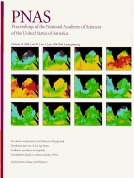Chemical defense against predation in an insect egg
Dublin Core
Título
Chemical defense against predation in an insect egg
Tema
HUEVOS
INSECTOS
2000
BIBLIOGRAFIA NACIONAL QUIMICA
Abstract
The larva of the green lacewing (Ceraeochrysa cubana) (Neuroptera, Chrysopidae) is a natural predator of eggs of Utetheisa ornatrix (Lepidoptera, Arctiidae), a moth that sequesters pyrrolizidine alkaloids from its larval foodplant (Fabaceae, Crotalaria spp.). Utetheisa eggs are ordinarily endowed with the alkaloid. Alkaloidfree Utetheisa eggs, produced experimentally, are pierced by the larva with its sharp tubular jaws and sucked out. Alkaloid-laden eggs, in contrast, are rejected. When attacking an Utetheisa egg cluster (numbering on average 20 eggs), the larva subjects it to an inspection process. It prods and/or pierces a small number of eggs (on average two to three) and, if these contain alkaloid, it passes "negative judgement" on the remainder of the cluster and turns away. Such generalization on the part of the larva makes sense, because the eggs within clusters differ little in alkaloid content. There is, however, considerable between-cluster variation in egg alkaloid content, so clusters in nature can be expected to range widely in palatability. To check each cluster for acceptability must therefore be adaptive for the larva, just as it must be adaptive for Utetheisa to lay its eggs in large clusters and to apportion alkaloid evenly among eggs of a cluster.
Fuente
Proceedings of the National Academy of Sciences of the United States of America v. 97, no. 4, 2000. -- p. 1634-1639
- Fecha de agregación
- April 29, 2015
- Colección
- Bibliografía Nacional Química
- Tipo de Elemento
- Document
- Etiquetas
- Huevos, Insectos
- Citación
- Eisner, T, “Chemical defense against predation in an insect egg,” RIQUIM - Repositorio Institucional de la Facultad de Química - UdelaR, accessed July 26, 2024, https://riquim.fq.edu.uy/items/show/2918.
- Archivos

